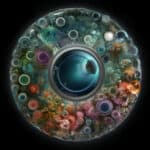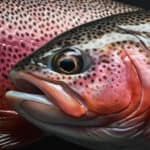Phytoplankton, the microscopic plants that inhabit the world’s oceans, play a crucial role in marine ecosystems. These tiny organisms serve as the foundation of the marine food web, providing sustenance for a wide range of marine life, from small zooplankton to large whales. The diet of phytoplankton consists primarily of sunlight, carbon dioxide, and nutrients such as nitrogen and phosphorus. Through the process of photosynthesis, they convert these elements into organic matter, releasing oxygen as a byproduct. This article delves into the fascinating world of phytoplankton diet, exploring their sources of nutrition and their significance in the marine ecosystem. So, let’s dive in and discover the secrets of these microscopic powerhouses!
Key Takeaways
- Phytoplankton are microscopic plants that form the base of the marine food chain.
- They obtain energy through photosynthesis, using sunlight and nutrients from the water.
- Phytoplankton are an important source of food for many marine organisms, including fish, whales, and zooplankton.
- Changes in phytoplankton abundance and composition can have significant impacts on marine ecosystems and global carbon cycling.
- Understanding phytoplankton diet and their role in the food web is crucial for studying and managing marine ecosystems.
Understanding Phytoplankton: The Base of Aquatic Food Chain
A. What is Phytoplankton?
Phytoplankton are microscopic organisms that play a crucial role in the Earth’s aquatic ecosystems. These tiny organisms, which include various species of algae and bacteria, are the primary producers in the marine food chain. They harness the power of sunlight through photosynthesis to convert carbon dioxide and nutrients into organic matter, providing the foundation for life in the ocean.
Phytoplankton are incredibly diverse, with numerous species adapted to different environmental conditions. They come in various shapes and sizes, ranging from single-celled diatoms to long filamentous cyanobacteria. Despite their small size, phytoplankton collectively account for a significant portion of the Earth’s oxygen production and carbon dioxide absorption.
B. Where do Phytoplankton Live and Grow?
Phytoplankton can be found in virtually every body of water, from oceans and seas to lakes and rivers. They thrive in environments with ample sunlight and nutrients, such as nitrogen, phosphorus, and iron. These nutrients are essential for their growth and reproduction.
In the ocean, phytoplankton are most abundant in the sunlit surface layer, known as the euphotic zone. This zone extends to a depth where light penetration becomes too weak for photosynthesis to occur effectively. The distribution of phytoplankton is influenced by factors such as ocean temperature, nutrient availability, and the presence of other organisms.
C. Phytoplankton in the Food Chain
Phytoplankton form the base of the aquatic food chain, serving as a vital food source for a wide range of organisms. They are consumed by zooplankton, which are small animals that feed on phytoplankton. Zooplankton, in turn, become prey for larger organisms such as fish, whales, and other marine animals.
The relationship between phytoplankton and zooplankton is a crucial part of the oceanic ecosystem. It forms the basis of the food web, where energy is transferred from one organism to another. Without phytoplankton, the entire food chain would collapse, leading to a decline in the abundance and diversity of aquatic organisms.
Furthermore, phytoplankton play a vital role in nutrient cycling. When they die or are consumed, their organic matter sinks to the ocean floor, carrying with it the nutrients they have absorbed. This process helps replenish the nutrient supply in deeper waters, supporting the growth of other organisms.
In recent years, scientists have also recognized the importance of phytoplankton in mitigating climate change. Through photosynthesis, they absorb carbon dioxide from the atmosphere, acting as a significant carbon sink. This process helps regulate global carbon levels and contributes to the overall balance of the Earth’s climate system.
In conclusion, phytoplankton are the unsung heroes of the ocean. These microscopic organisms, through their photosynthetic abilities, provide the foundation for the entire aquatic food chain. They not only support the survival of countless marine species but also play a crucial role in maintaining the health and balance of our planet’s ecosystems. Understanding and protecting these vital organisms is essential for the future of our oceans and the biodiversity they sustain.
The Diet of Phytoplankton: A Closer Look
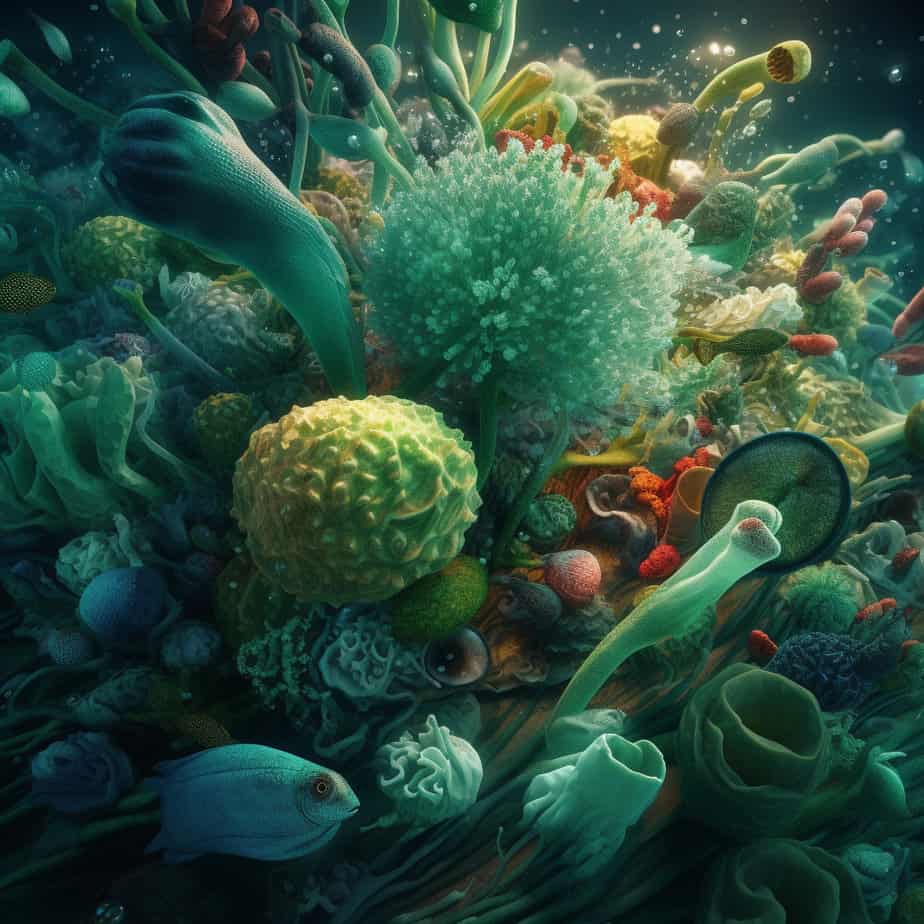
A. What Constitutes a Phytoplankton Diet?
Phytoplankton, the microscopic algae that inhabit the world’s oceans, have a unique and fascinating diet. As primary producers in the marine food chain, they play a crucial role in sustaining the entire oceanic ecosystem. But what exactly do these tiny organisms consume?
Phytoplankton primarily obtain their food through the process of photosynthesis. Just like plants on land, they use sunlight, carbon dioxide, and nutrients to produce energy-rich organic compounds. This ability to convert sunlight into food makes phytoplankton essential for life in the ocean.
B. How do Phytoplankton Get Their Food?
To understand how phytoplankton acquire their food, let’s delve into the process of photosynthesis. These microscopic organisms contain chlorophyll, a pigment that enables them to capture sunlight. When sunlight penetrates the surface of the ocean, phytoplankton harness its energy to convert carbon dioxide and water into glucose and oxygen.
Phytoplankton are well-adapted to life in the ocean and have developed various strategies to optimize their access to sunlight. Some species are buoyant and float near the water’s surface, where sunlight is abundant. Others have unique shapes or structures that allow them to maximize their exposure to sunlight. By positioning themselves strategically, phytoplankton can efficiently carry out photosynthesis and produce the energy they need to survive.
C. Where do Phytoplankton Get Their Nutrients?
While sunlight is crucial for phytoplankton’s energy production, they also require essential nutrients to thrive. These nutrients include nitrogen, phosphorus, iron, and trace elements. But where do phytoplankton obtain these vital nutrients?
Phytoplankton acquire nutrients through a process called nutrient cycling. Nutrients are constantly being recycled in the ocean, thanks to the interaction between phytoplankton, zooplankton, and other aquatic organisms. When phytoplankton photosynthesize and grow, they take up nutrients from the surrounding water. As they are consumed by zooplankton and other organisms, these nutrients are passed along the aquatic food web.
Additionally, oceanic currents and upwelling events play a crucial role in supplying phytoplankton with nutrients. Upwelling occurs when deep, nutrient-rich waters rise to the surface, providing a fresh supply of essential elements. These nutrients fuel the growth and reproduction of phytoplankton, leading to the formation of vibrant and productive ecosystems.
In conclusion, the diet of phytoplankton is primarily based on photosynthesis, where they convert sunlight, carbon dioxide, and nutrients into energy-rich organic compounds. By understanding how phytoplankton obtain their food and nutrients, we gain valuable insights into the intricate workings of the oceanic ecosystem. The next time you gaze out at the vast expanse of the sea, remember that beneath the surface, a microscopic world of phytoplankton is diligently working to sustain life in our oceans.
The Life Cycle of Phytoplankton: Blooming and Dying
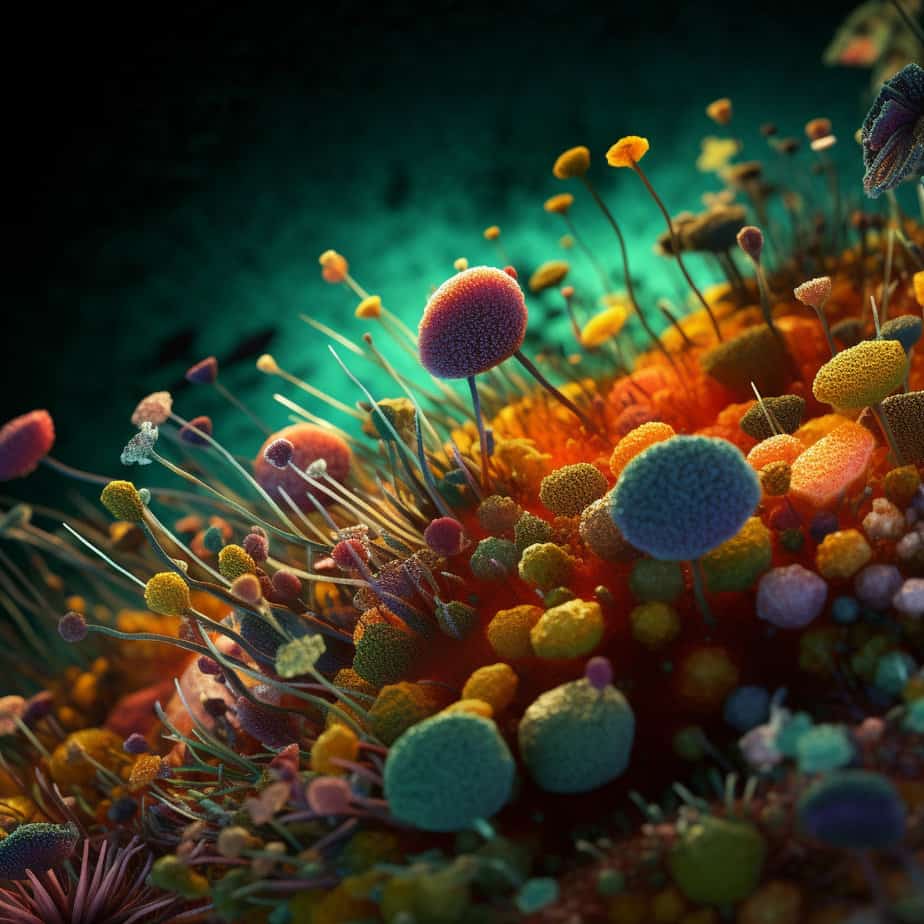
A. When do Phytoplankton Bloom?
Phytoplankton, the microscopic algae that form the foundation of the marine food chain, have a fascinating life cycle. One of the most intriguing aspects of their life cycle is the phenomenon known as blooming. Phytoplankton blooms occur when these tiny organisms rapidly multiply and form dense populations in the ocean.
The timing of phytoplankton blooms varies depending on several factors, including nutrient availability, sunlight, and ocean temperature. These factors play a crucial role in determining when and where phytoplankton will thrive.
Nutrient cycling in the ocean is a key driver of phytoplankton growth. These primary producers require essential nutrients such as nitrogen, phosphorus, and iron to fuel their growth and reproduction. When these nutrients are abundant, phytoplankton populations can rapidly increase, leading to a bloom.
Sunlight is another critical factor in phytoplankton blooming. As photosynthetic organisms, phytoplankton rely on sunlight to convert carbon dioxide into organic matter. Sunlight provides the energy needed for photosynthesis, allowing phytoplankton to produce food and grow. Therefore, areas with high sunlight exposure are more likely to experience phytoplankton blooms.
Ocean temperature also plays a role in phytoplankton blooming. Warmer waters tend to promote the growth and reproduction of phytoplankton. As the temperature rises, the metabolic rates of these organisms increase, leading to faster growth and division. However, extreme temperature fluctuations can also negatively impact phytoplankton, causing stress and potentially leading to their decline.
B. What Happens When Phytoplankton Die in the Water?
While phytoplankton blooms are a remarkable sight, their life cycle doesn’t end there. Eventually, these tiny organisms die, and their remains sink to the ocean floor. When phytoplankton die in the water, several important processes occur.
Firstly, the decomposition of phytoplankton releases organic matter and nutrients back into the water. This process is crucial for nutrient cycling in the oceanic ecosystem. The nutrients released from decaying phytoplankton can be utilized by other organisms, such as zooplankton, which feed on the dead phytoplankton. This forms the basis of the aquatic food web, as zooplankton are then consumed by larger organisms, creating a chain of energy transfer.
Secondly, the sinking of phytoplankton carcasses contributes to the oceanic carbon sink. As phytoplankton die and sink, they take with them the carbon they absorbed during their lifetime. This process, known as carbon sequestration, helps to remove carbon dioxide from the atmosphere and store it in the deep ocean. Phytoplankton play a vital role in regulating global carbon levels and mitigating climate change.
Lastly, the death and sinking of phytoplankton can also lead to changes in the physical properties of the water. Large phytoplankton blooms can cause a decrease in water clarity due to the presence of suspended particles. This decrease in clarity, known as high chlorophyll concentration, can impact light penetration and affect the growth of other aquatic organisms.
C. Why are Phytoplankton Dying?
While phytoplankton are essential for the health of the oceanic ecosystem, there are concerns about their declining populations in certain regions. Several factors contribute to the decline of phytoplankton, including changes in ocean temperature, nutrient availability, and climate change.
Rising ocean temperatures due to global warming can have detrimental effects on phytoplankton. These organisms have specific temperature ranges in which they thrive, and even slight increases in temperature can disrupt their growth and reproduction. Additionally, warmer waters can lead to stratification, where layers of water with different temperatures form. This can limit the vertical mixing of nutrients, reducing their availability for phytoplankton.
Changes in nutrient availability can also impact phytoplankton populations. Human activities, such as agricultural runoff and pollution, can introduce excessive nutrients into coastal waters. This can lead to nutrient imbalances and harmful algal blooms, which can be toxic to marine life and disrupt the natural balance of the ecosystem.
Furthermore, climate change can alter oceanic conditions, affecting the distribution and abundance of phytoplankton species. Changes in rainfall patterns, ocean currents, and wind patterns can all influence the availability of sunlight and nutrients, impacting the growth and survival of phytoplankton.
In conclusion, understanding the life cycle of phytoplankton is crucial for comprehending the dynamics of the oceanic ecosystem. Phytoplankton blooms and their subsequent death play a vital role in nutrient cycling, carbon sequestration, and the overall health of the marine environment. However, it is essential to address the factors contributing to the decline of phytoplankton populations to ensure the preservation of this critical component of the oceanic food web.
The Importance of Phytoplankton to Ecosystems and Humans
A. Why Phytoplankton is Important to Aquatic Ecosystems
Phytoplankton, the microscopic algae that inhabit the world’s oceans, play a crucial role in maintaining the health and balance of aquatic ecosystems. These tiny organisms are the primary producers in the marine food chain, forming the foundation of the entire oceanic ecosystem.
One of the key reasons why phytoplankton is so important is its ability to carry out photosynthesis. Just like plants on land, phytoplankton use sunlight to convert carbon dioxide and nutrients into organic matter, releasing oxygen as a byproduct. This process not only provides oxygen for other aquatic organisms but also helps regulate the Earth’s climate by absorbing significant amounts of carbon dioxide from the atmosphere.
Phytoplankton also serves as a vital food source for zooplankton, which are small aquatic organisms that feed on phytoplankton. Zooplankton, in turn, become food for larger marine organisms such as fish, whales, and other marine mammals. This intricate feeding relationship forms the basis of the aquatic food web, supporting the entire ecosystem.
Furthermore, phytoplankton plays a crucial role in nutrient cycling within aquatic environments. As phytoplankton grow and reproduce, they take up essential nutrients from the water, such as nitrogen and phosphorus. When these organisms die, they sink to the ocean floor, carrying these nutrients with them. This process helps replenish nutrient levels in deeper waters, ensuring a continuous supply for other organisms.
B. Phytoplankton’s Role in Human Life
While phytoplankton primarily sustains aquatic ecosystems, its importance extends to human life as well. Phytoplankton is the foundation of the marine food chain, providing a significant portion of the world’s seafood. Fish, shellfish, and other marine organisms that humans consume rely on phytoplankton as their primary food source.
In addition to being a vital food source, phytoplankton also contributes to the overall health of the planet. As mentioned earlier, these microscopic algae absorb carbon dioxide from the atmosphere through photosynthesis. By doing so, they help mitigate the effects of climate change by acting as a natural carbon sink. This process is especially crucial in the face of rising carbon dioxide levels and global warming.
Phytoplankton also contributes to the production of oxygen. It is estimated that phytoplankton produces about half of the world’s oxygen supply, making it essential for the survival of all living organisms, including humans. Therefore, the health and abundance of phytoplankton directly impact the quality of the air we breathe.
C. Is Phytoplankton Safe to Eat for Humans?
Given the importance of phytoplankton in the marine food chain, it is natural to wonder if it is safe for humans to consume. While phytoplankton itself is not commonly consumed directly by humans, certain species of phytoplankton, such as microalgae, are cultivated and harvested for their nutritional benefits.
Microalgae, which include spirulina and chlorella, are rich in essential nutrients such as protein, vitamins, minerals, and omega-3 fatty acids. These microalgae are often used as dietary supplements and are considered safe for human consumption when sourced from reputable manufacturers.
However, it is important to note that not all species of phytoplankton are safe to eat. Some species can produce harmful toxins, known as harmful algal blooms (HABs), which can contaminate seafood and pose risks to human health. Therefore, it is crucial to rely on regulated and tested sources when consuming phytoplankton-based products.
In conclusion, phytoplankton plays a vital role in sustaining aquatic ecosystems and has significant implications for human life. Its ability to carry out photosynthesis, support the marine food chain, contribute to nutrient cycling, and act as a carbon sink makes it an essential component of our planet’s health. While not all species of phytoplankton are safe for human consumption, microalgae offer nutritional benefits and are considered safe when sourced responsibly. Understanding and appreciating the importance of phytoplankton is crucial for the preservation of our oceans and the well-being of both ecosystems and humans alike.
Phytoplankton and Other Aquatic Life: A Symbiotic Relationship
A. What is a Plankton Diet?
In the vast and diverse world of aquatic ecosystems, a delicate balance exists between various organisms. One such group of organisms that plays a crucial role in these ecosystems is phytoplankton. Phytoplankton are microscopic algae that inhabit the upper layers of oceans, lakes, and other bodies of water. They are the primary producers in the marine food chain, converting sunlight and nutrients into organic matter through the process of photosynthesis.
Phytoplankton serve as the foundation of the aquatic food web, providing sustenance for a wide range of organisms, from tiny zooplankton to massive whales. But what exactly do these tiny organisms eat? Let’s explore the fascinating world of plankton diets.
B. Plankton Diet: What Do They Eat?
Phytoplankton obtain their nutrients from the surrounding water, absorbing dissolved substances such as nitrogen, phosphorus, and trace elements. These essential nutrients fuel their growth and reproduction. Additionally, phytoplankton require sunlight for photosynthesis, which is why they are most abundant in well-lit surface waters.
The diet of phytoplankton primarily consists of inorganic compounds, including carbon dioxide and various dissolved minerals. They convert these inorganic substances into organic matter, releasing oxygen as a byproduct. This process not only sustains their own growth but also plays a vital role in the global carbon cycle, as phytoplankton absorb significant amounts of carbon dioxide from the atmosphere.
C. Plankton Diet in Whales
While phytoplankton may seem inconspicuous, their role in sustaining larger organisms, such as whales, is of immense importance. Whales, particularly baleen whales, have evolved to feed on vast quantities of small organisms, including zooplankton. These zooplankton, in turn, rely on phytoplankton as their primary food source.
Baleen whales possess baleen plates in their mouths, which act as a filter to trap large volumes of water containing plankton. As the whale swims through the water with its mouth open, it filters out the water, leaving behind the plankton for consumption. This feeding strategy allows whales to consume massive amounts of plankton-rich water in a single gulp.
The relationship between phytoplankton and whales is a remarkable example of symbiosis in the oceanic ecosystem. Phytoplankton provide the necessary nutrients for the growth of zooplankton, which, in turn, become a vital food source for whales. This interconnectedness highlights the intricate web of life that exists in our oceans.
In conclusion, the plankton diet is a fascinating aspect of marine biology. Phytoplankton, as primary producers, play a crucial role in the oceanic food web by converting sunlight and nutrients into organic matter. Their diet consists of inorganic compounds, such as carbon dioxide and dissolved minerals, which they convert into essential nutrients. This diet sustains their growth and reproduction while also contributing to the global carbon cycle. Furthermore, the relationship between phytoplankton and larger organisms, like whales, showcases the intricate symbiotic connections that exist in the oceanic ecosystem. Understanding the plankton diet is essential for comprehending the complexities of marine life and the delicate balance that exists within our oceans.
Cultivating and Feeding Phytoplankton: An Overview
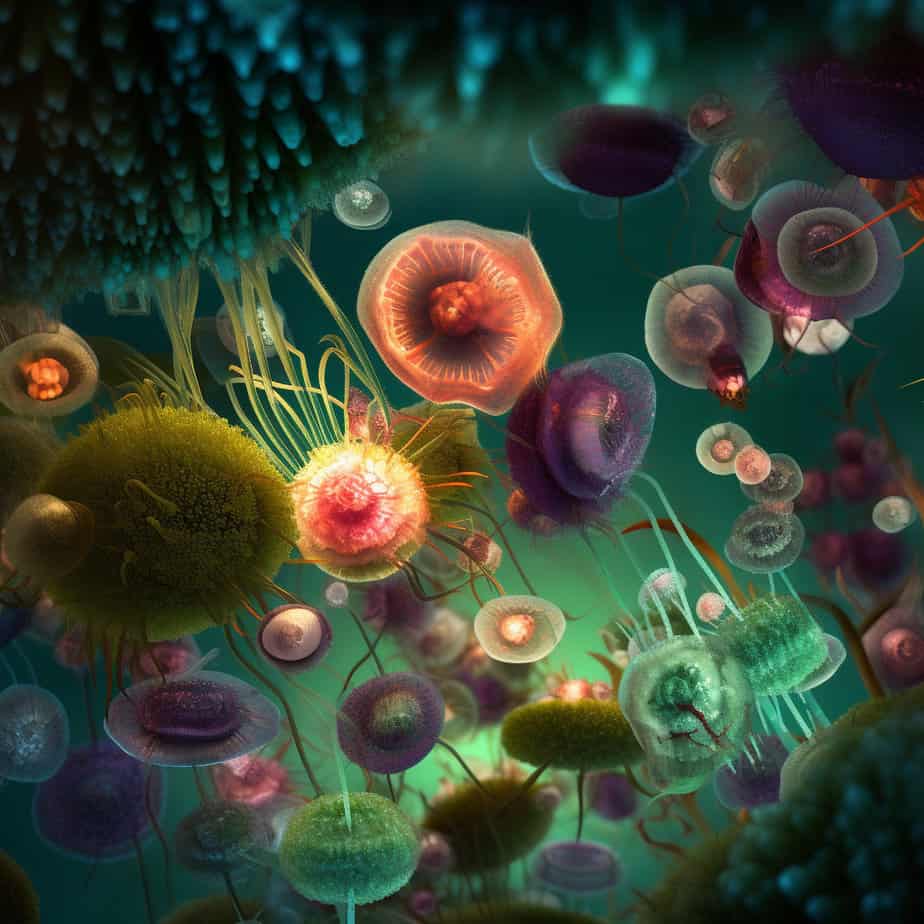
A. How to Feed Phytoplankton
Phytoplankton, the microscopic algae that form the foundation of the marine food chain, are essential for the health and stability of the oceanic ecosystem. These tiny organisms play a crucial role in nutrient cycling, carbon dioxide absorption, and the production of oxygen through photosynthesis. To ensure their growth and survival, it is important to understand how to feed phytoplankton effectively.
1. Providing the Right Nutrients
Just like any other living organism, phytoplankton require specific nutrients to thrive. The primary nutrients needed by phytoplankton include nitrogen, phosphorus, and trace metals such as iron, zinc, and manganese. These nutrients can be found in various forms, including dissolved inorganic compounds and organic matter. To feed phytoplankton, it is important to provide a balanced mix of these nutrients.
2. Maintaining Optimal Conditions
In addition to nutrients, phytoplankton also require favorable environmental conditions for growth. These conditions include appropriate levels of sunlight, temperature, and water movement. Sunlight is crucial for photosynthesis, the process by which phytoplankton convert carbon dioxide and nutrients into energy. Therefore, it is important to ensure that phytoplankton cultures receive adequate sunlight exposure.
Temperature also plays a significant role in phytoplankton growth. Different species of phytoplankton have specific temperature ranges within which they thrive. By maintaining the right temperature, it is possible to promote the growth of specific phytoplankton species. Water movement is another important factor to consider, as it helps distribute nutrients and prevents the formation of stagnant areas that can hinder phytoplankton growth.
3. Cultivating Phytoplankton
To feed phytoplankton, it is necessary to cultivate them in controlled environments such as laboratories or aquaculture facilities. This allows researchers and aquarists to manipulate the conditions to optimize growth. Cultivating phytoplankton involves creating a suitable culture medium that provides the necessary nutrients and maintaining the ideal environmental conditions discussed earlier.
The culture medium can be made using a combination of water, nutrients, and sometimes vitamins or growth factors. The specific composition of the culture medium depends on the phytoplankton species being cultivated. Once the culture medium is prepared, it is inoculated with a small amount of phytoplankton and placed under the appropriate conditions for growth.
B. How Does Phytoplankton Survive?
Phytoplankton have evolved various strategies to survive in the vast and dynamic oceanic environment. These strategies allow them to adapt to changing conditions and compete for resources in the aquatic food web.
1. Rapid Reproduction
One of the key survival strategies of phytoplankton is their ability to reproduce rapidly. Under favorable conditions, phytoplankton can undergo exponential growth, leading to the formation of large populations known as “blooms.” This rapid reproduction allows phytoplankton to take advantage of available nutrients and sunlight, outcompeting other organisms in the water column.
2. Nutrient Uptake
Phytoplankton have developed efficient mechanisms for nutrient uptake. They can absorb dissolved inorganic nutrients from the surrounding water, such as nitrate, phosphate, and iron. Some phytoplankton species can also utilize organic matter as a source of nutrients. This ability to extract nutrients from the environment enables phytoplankton to survive even in nutrient-poor areas of the ocean.
3. Defense Mechanisms
To protect themselves from predation, phytoplankton have evolved various defense mechanisms. Some species produce toxins that deter grazers, while others have developed physical structures such as spines or shells. These defense mechanisms help phytoplankton avoid being consumed by zooplankton and other aquatic organisms, allowing them to survive and reproduce.
In conclusion, feeding phytoplankton involves providing the right nutrients, maintaining optimal environmental conditions, and cultivating them in controlled environments. Phytoplankton have evolved survival strategies such as rapid reproduction, nutrient uptake, and defense mechanisms to thrive in the oceanic ecosystem. Understanding how to feed and support the growth of phytoplankton is crucial for maintaining the health and balance of marine ecosystems. Conclusion
In conclusion, the diet of phytoplankton plays a crucial role in the marine ecosystem. These microscopic organisms are the foundation of the food chain, providing sustenance for a wide range of marine life, from tiny zooplankton to massive whales. Phytoplankton obtain their energy through photosynthesis, converting sunlight and nutrients into organic matter. They are incredibly diverse, with different species thriving in various oceanic regions and adapting to different environmental conditions. The consumption of phytoplankton by marine organisms not only provides them with essential nutrients but also helps to regulate carbon dioxide levels in the atmosphere. As such, understanding the diet and dynamics of phytoplankton is vital for maintaining the health and balance of our oceans. Ongoing research and monitoring efforts are crucial to further our understanding of these fascinating organisms and their role in the global ecosystem.
Frequently Asked Questions
What is a phytoplankton diet?
Phytoplankton, being the primary producers in the marine food chain, create their own food through a process called photosynthesis. They absorb sunlight and carbon dioxide to produce glucose and oxygen. They also require nutrients like nitrogen and phosphorus, which they obtain from the water around them.
Where do phytoplankton grow?
Phytoplankton primarily grow in the upper layers of the ocean where sunlight can penetrate, as they require sunlight for photosynthesis. The growth of phytoplankton also depends on the availability of nutrients, which can vary with ocean temperature and other environmental factors.
When do phytoplankton bloom?
Phytoplankton blooms occur when conditions are optimal, usually in the spring and summer when sunlight is abundant and nutrients are plentiful. These blooms can be seen from space and significantly impact the oceanic ecosystem.
How does phytoplankton survive?
Phytoplankton survive by performing photosynthesis, absorbing sunlight and carbon dioxide to produce their own food. They also absorb nutrients from the water. Their survival is influenced by factors such as light availability, nutrient concentration, and ocean temperature.
Why are phytoplankton important to humans?
Phytoplankton are crucial to humans as they play a significant role in the carbon cycle by absorbing carbon dioxide, a greenhouse gas. They also produce a large portion of the world’s oxygen. Moreover, as primary producers, they form the base of the marine food chain, supporting a diverse range of aquatic organisms.
How do phytoplankton get their food?
Phytoplankton produce their own food through photosynthesis. They use sunlight, carbon dioxide, and nutrients from the water to create glucose, which provides them with energy.
When phytoplankton die in the water, what does it cause?
When phytoplankton die, they sink to the bottom of the ocean, taking the carbon they have absorbed with them. This process is known as carbon sequestration and helps regulate the planet‘s climate. However, excessive phytoplankton death can lead to phenomena like dead zones, where the decomposition process uses up oxygen and creates areas devoid of life.
What is the role of phytoplankton in the food chain?
In the marine food chain, phytoplankton serve as primary producers. They are eaten by small aquatic organisms like zooplankton, which are in turn consumed by larger animals. This way, phytoplankton support the entire marine food web.
Where do phytoplankton get their nutrients?
Phytoplankton obtain nutrients such as nitrogen and phosphorus from the water in which they live. These nutrients are essential for their growth and reproduction.
Is phytoplankton safe to eat?
Certain species of phytoplankton, like marine phytoplankton, are safe and even beneficial for human consumption, packed with nutrients and antioxidants. However, not all types are safe to eat, and some can produce harmful toxins. Always ensure that any phytoplankton consumed is from a safe and reliable source.



